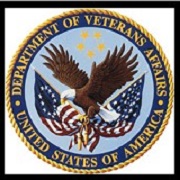New Leadership at Veterans Affairs Results from Transfers
One investigation uncovered that new leadership in Veterans Affairs has not occurred due to new hires but instead due to transfers between facilities.

- One public health payer that has had a wide amount of controversy regarding its operations is Veterans Affairs. The latest controversy comes regarding the Veterans Affairs claim that it has new leadership and leadership teams. USA Today conducted its own investigation and reports that Veterans Affairs has hired only eight new medical center directors since 2014.

However, Veterans Affairs Secretary Bob McDonald stated two years ago that the agency has hired more than 90 percent of new leadership outside the VA. USA Today uncovered that the new leadership actually stems from merely moving existing managers to different locations and job titles. It seems that, even when directors weren’t succeeding at one facility, they were transferred to a different medical center.
“You can’t have a robust human resource system unless you are providing opportunities for progression,” McDonald told the news source. “I’m sure the process we follow for promotion or for transfer to a larger facility is the government-regulated process, which is a fair process dictated by Congress and I’m sure the people who moved to new facilities were, you know, deserved that movement.”
Out of 140 medical center directors appointed, only 69 are permanent placements and a mere eight have not worked for Veterans Affairs before. The agency feels that it is under new leadership if a member of its management team has transitioned from one medical center to a different one.
VA Undersecretary for Health David Shulkin, however, explained to the news source some of the challenges standing in the way of hiring completely new managers. An elongated hiring process and salary constraints have blocked the agency’s capabilities in attracting new talent. Shulkin called for more people to come forward to take the place necessary to lead the Veterans Affairs agency into the future.
“We tend to use lots of numbers and that can be confusing, and what I’m trying to do is simplify the message, so here’s my message: I need help,” Shulkin told the source. “I need the right leaders to come in and to take these positions of responsibility on behalf of the country, and I don’t care if it’s 90 percent, 80 percent, or 60 percent. I know I have openings and I don’t have the applicants.”
When news originally broke out several years ago that 40 veterans passed away while waiting to receive care from Veterans Affairs, the agency went forward with firing seven medical center directors while one quit and another retired, making a total of nine replacements necessary.
The investigation found that at least five medical directors who were transferred from one location to another were originally found to provide low-quality care, falsifying wait times, and other forms of mismanagement.
When it comes to extensive wait times, Veterans Affairs has still been struggling with addressing this issue as early as this past August. The largest reason for this is due to the fact that the number of physicians and other clinicians working for the VA has decreased greatly in recent years.
In 2011, almost 6,000 healthcare providers including nurses, physical therapists, and psychologists left their positions at Veterans Affairs. This number has risen to 7,734 as of 2015. The story that made headlines several years ago regarding the long patient wait times did not help the VA with future recruitment of nurses, physicians, and other medical professionals.
The latest controversy of not hiring new leadership outside of Veterans Affairs to fill necessary director roles may also be due to the negative publicity of this agency, which makes it more difficult to recruit the right talent for these jobs.
Ongoing problems at Veterans Affairs may need to be investigated further to ensure the right leaders are in place to reduce wait times and improve efficiency at supporting the providers, their reimbursement system, and the patient community. However, the House of Representatives did move forward with passing critical funding in September 2016 for military construction and Veterans Affairs, according to a press release from the US House of Representatives Committee on Appropriations.
The funding would continue beyond the fiscal year until December 9, 2016 and includes more than $1 billion in emergency funds to cover the prevention and fight against the spread of the Zika Virus as well as $500 million to assist states with rebuilding after flooding.
“This is a necessary bill that will keep the government open and operating, provide resources for our service members and veterans, and address critical needs across our country related to the Zika virus, the opioid epidemic, and the recent, disastrous floods,” Chairman Hal Rogers said in a statement. “I have said many times before, a continuing resolution is a last resort. But, it is what we must do to fulfill our congressional responsibility to keep the lights on in our government. This legislation is a good compromise, and I am pleased the House has voted today to send it to the President’s desk.”
Dig Deeper:
Veterans Affairs Processes Only 66% of Claims in 30 Days
How Medicare, Medicaid, and CHIP Guide the Health Payer Industry
